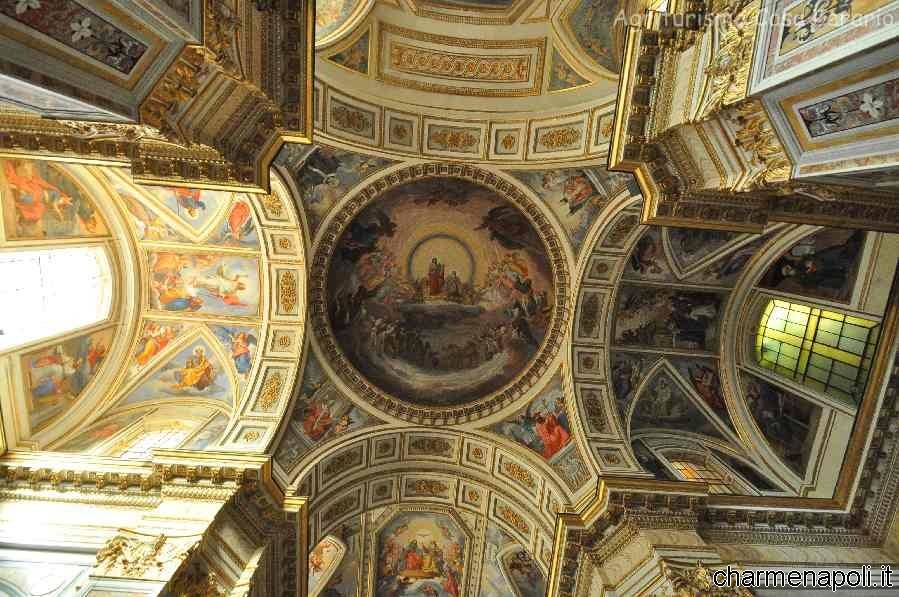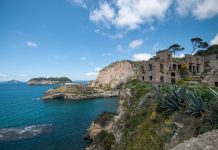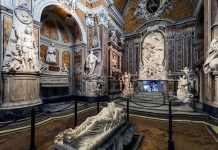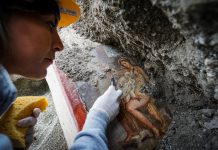The Trinità di Cava Benedectine Abbey is a beacon of faith on Mount Finestra just a stone’s throw from the charming medieval hamlet called Corpo di Cava on the outskirts of Cava dei Tirreni. The road winds through fields and woods, past the turreted walls of the village founded in the 11th century by Saint Alferius Pappacarbone and later enlarged by Abbot Peter I until the 18th century façade of the abbey appears. At first sight, it seems a small building but the majestic architecture conceals a veritable citadel nestling in the hillside: a monument laden with history, art and sanctity.
The Abbey, which celebrated its millennium in 2011, was founded by the Lombard Prince Alferius, a relative and the ambassador of the Duke of Salerno Guaimar III, who found faith in 1011 and lived as a hermit in the huge Arsicia cave before building a small monastery for himself and for the dozens of disciples who had followed his example. Alferius died on 12 April 1250 and was buried in the cave, now part of the abbey complex, but many of his successors were later canonised and beatified, such as Saint Leo I (1050-1079) Saint Peter I (1079-1123) and Saint Constabilis (1123-24). Peter I, Alferius’s nephew, extended the monastery and its power grew as more and more churches throughout southern Italy came under its control.
In 1092 Pope Urban II, who had met Peter at Cluny, visited the monastery and consecrated the basilica, while later pontiffs, bishops, princes and lords further developed the congregation until it was renowned far and wide. The Abbey was a reliable stronghold for the Papacy but also a place of refuge for the local population: Saint Constabilis and the Blessed Simeon later built the Castle of the Angel or Castellabate to protect the townspeople from Saracen raiders. The monks from the Abbey also helped the needy, opened hospices and hospitals and conducted a pastoral ministry in its dependent monasteries.
Over the centuries, the monastery acquired numerous artworks and precious objects, many of which were produced by the monks or other artists but some were donated or found, such as the Roman sarcophagi and medieval artefacts found in the Arsicia cave prior to the arrival of Alferius. The famous library dates from the period of the Counter-Reformation while between the 16th and 18th centuries the Abbey was renovated, the church rebuilt, the seminary and the novitiate opened and the monastery enlarged.[charme-gallery]
The surviving parts of the medieval basilica include the 12th century cosmatesque ambon and the coloured marble Chapel of the Holy Fathers, refurbished in 1641. The other chapels conserve an 11th century marble altar frontal, sculptures by Tino di Camaino and a lavish 15th century majolica floor. Other areas include the 13th century Cloister and the adjacent gothic Ancient Capitol room (which houses sarcophagi and frescoes), the 12th century Lombard Crypt and the Chapel of Saint Germain (1280). In addition to the Library, the Abbey is renowned for its archive, which dates from 1025 when Saint Alferius began collecting a wide range of documents that were systematically organised in the early 17th century.
The hamlet of Corpo Di Cava was built on Alferius’s request and a flight of steps connected the monastery to the hospice and houses he had built in 1012 for the poor and for pilgrims. The first inhabitants were local farmers and workers in the hospice, but Abbot Peter I brought magistrates, functionaries, shopkeepers and their families into the valley so, by 1082, more space was needed and the existing building was extended and a new one built at the entrance of the village.
A decade later, the Abbot had a wall with eight turrets and three gates built as a defence against bandits and a corporation of judges, magistrates and notaries was set up within the monastery, which was known as the “Corpus”, hence the name of the village. However, the fortifications were poorly maintained and were even demolished by Frederick II’s son Manfred, who took refuge in the village during the war between Charles of Anjou and the heirs of the Swabian dynasty. The ancient fortifications were restored by the Aragonese but all that now remains is the cylindrical tower engraved with the coat of arms of Ferdinand I of Aragon (1496), some walls and a lime kiln. Santa Maria Maggiore church, built between 1079 and 1092, was the original cathedral of Cava de’ Tirreni and contains four capitals from the columns of an ancient Roman temple, a 17th century sculpture of the Virgin Mary; three 18th century paintings and a medieval lectern. Nearby are the Chapel of the Holy Spirit Confraternity and the Petrasanta church built to commemorate the visit of Pope Urban II on 4 September 1092.
The cool climate, healthy air and the beauty of the mountain landscape made this charming hamlet a popular summer resort, frequented by the Italian nobility and renowned writers such as the Neapolitan poet Salvatore Di Giacomo.

 Italiano
Italiano














